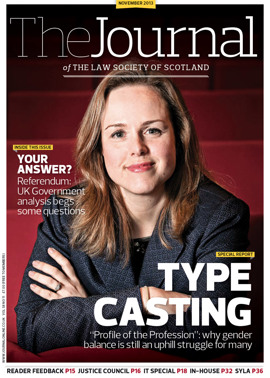Why environmental indemnity?
The Property Standardisation Group has been very pleased with the profession's response to a number of its documents. One in particular which appears to be widely used and, in being so, seems to be creating something of a change of mindset among commercial property lawyers, is the offer to sell.
This comes in two versions – one for a property sold with vacant possession, and one for the sale of an investment. The use of these documents marks a move away from the more traditional approach of using offers to purchase, and the PSG believes this is a change for the better. The arguments are now well known: the seller's solicitor has more knowledge of the property and can tailor the offer accordingly, etc.
Some PSG documents are more prescriptive than others, in the sense that some offer standard wording which can be used as drafted, whereas others offer suggested clauses/wording that may have to be adapted to suit the circumstances. The offers to sell fall into that latter category. Some clauses may be irrelevant to the transaction in question, while others may need amendment. One of the clauses which appears to have excited much debate and negotiation is the environmental clause (clause 12 in the vacant possession offer and clause 14 in the investment offer). In particular, there exist some strongly held conflicting views as to the appropriateness of the indemnity subclause which appears at the end of these clauses.
Separate purposes
While it is not for the PSG to take a stand on this issue either way, we thought it might assist the profession if some explanation were given as to the purpose behind each of the subclauses, as there may be misunderstanding regarding the issues that they seek to address. In particular, it is important to recognise that the indemnity clause deals with matters which are not covered, or at least not wholly covered, by the preceding subclauses. Whether, and to what extent, the indemnity clause remains in a particular contract is a matter for negotiation, of course, but the following explanation may assist to focus that debate more sharply.
The subclause on agreement as to environmental liabilities [12.2/14.2] introduces a type of agreement envisaged by part IIA of the Environmental Protection Act 1990 and the accompanying statutory guidance (together, the contaminated land regime), which allows parties to agree how to allocate liability under the Act. The primary purpose of the subclause is to give effect to how the parties have agreed to divide liabilities between themselves. However, for the subclause to operate successfully, at least in the contaminated land context, a certain set of qualifying criteria must be met.
The sold with information subclause [12.3/14.3] represents one of the tests for exclusion from liability included within the contaminated land regime. Again, a set of qualifying criteria must be met in order for the subclause to operate successfully in practice; if the conditions are satisfied, the seller should be excluded from liability under the regime.
Each of the above subclauses will apply only in situations whereas competent authority has take action against one or both of theparties in relation to harm (or a potential for harm) being caused by hazardous substances on or attributable to the relevant property. Neither subclause covers environmental claims by third parties, nor does it cover liabilities which may be incurred under other environmental legislation/regimes (e.g. air or water legislation). Plugging that gap is the aim of the environmental indemnity subclause [12.4/14.4]. The all-encompassing nature of the indemnity as drafted, in addition to ensuring that the preceding subclauses operate in the way that they are intended to, ensures that expenses associated with a third party claim against the seller (in, for example, nuisance) or liabilities arising under other regimes can be recovered.
Whether the environmental indemnity subclause remains in any particular contract - as drafted, in amended form, or not at all - is a matter for negotiation in each case, as said above. It is hoped, though, that this explanation may serve better to inform the debate on the issue.
In this issue
- Obituary: Professor Ian Willock
- Competition damages – a rocky road ahead?
- Heart of the matter
- Law reform on track
- Turning back the clock
- Golf and the right to roam
- Reading for pleasure
- Opinion column: Ros McInnes
- Book reviews
- Profile
- President's column
- Fee review open to views
- Some more equal than others
- Balancing act
- Paving the road to reform
- Blue sky thinking?
- A singular status
- You pay your money
- Acceptable BYOD use
- Interesting times still
- Aliment in vogue again
- Scottish Solicitors' Discipline Tribunal
- Speakers rise creatively to the challenge
- Why environmental indemnity?
- SYLA presents...
- How not to win business: a guide for professionals
- File reviews - how they can help
- Ask Ash
- Making the Act work
- Law reform roundup
- From the Brussels office
- Fraud alert revived
- "Start the conversation"






